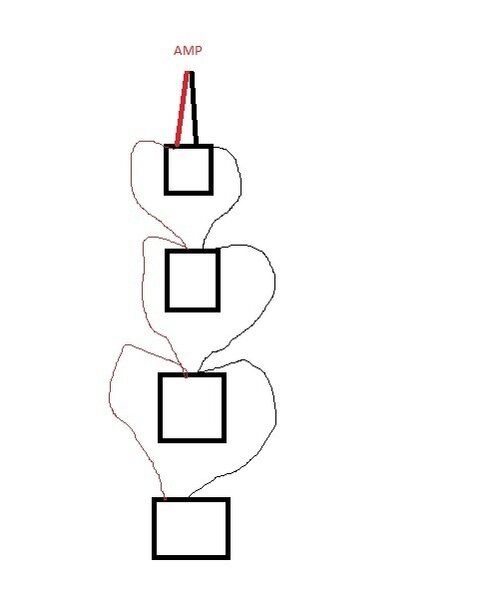Hello
I am running some speakers and I am wanting to wire 4 JBL Control 23 speakers at 8ohm and 50W each to one channel on a amp and do the same thing on the other side with 4 more speakers. Does this sound doable? I have never had to figure out ohms for speakers before. I am wanting to hook them to a Behringer mixer/amp. I was thinking in wiring them in a line like the drawing I made. Will they work like that or should I run each speaker back to the amp? Also what gauge of wire should I use for a 75' run?

I am running some speakers and I am wanting to wire 4 JBL Control 23 speakers at 8ohm and 50W each to one channel on a amp and do the same thing on the other side with 4 more speakers. Does this sound doable? I have never had to figure out ohms for speakers before. I am wanting to hook them to a Behringer mixer/amp. I was thinking in wiring them in a line like the drawing I made. Will they work like that or should I run each speaker back to the amp? Also what gauge of wire should I use for a 75' run?



